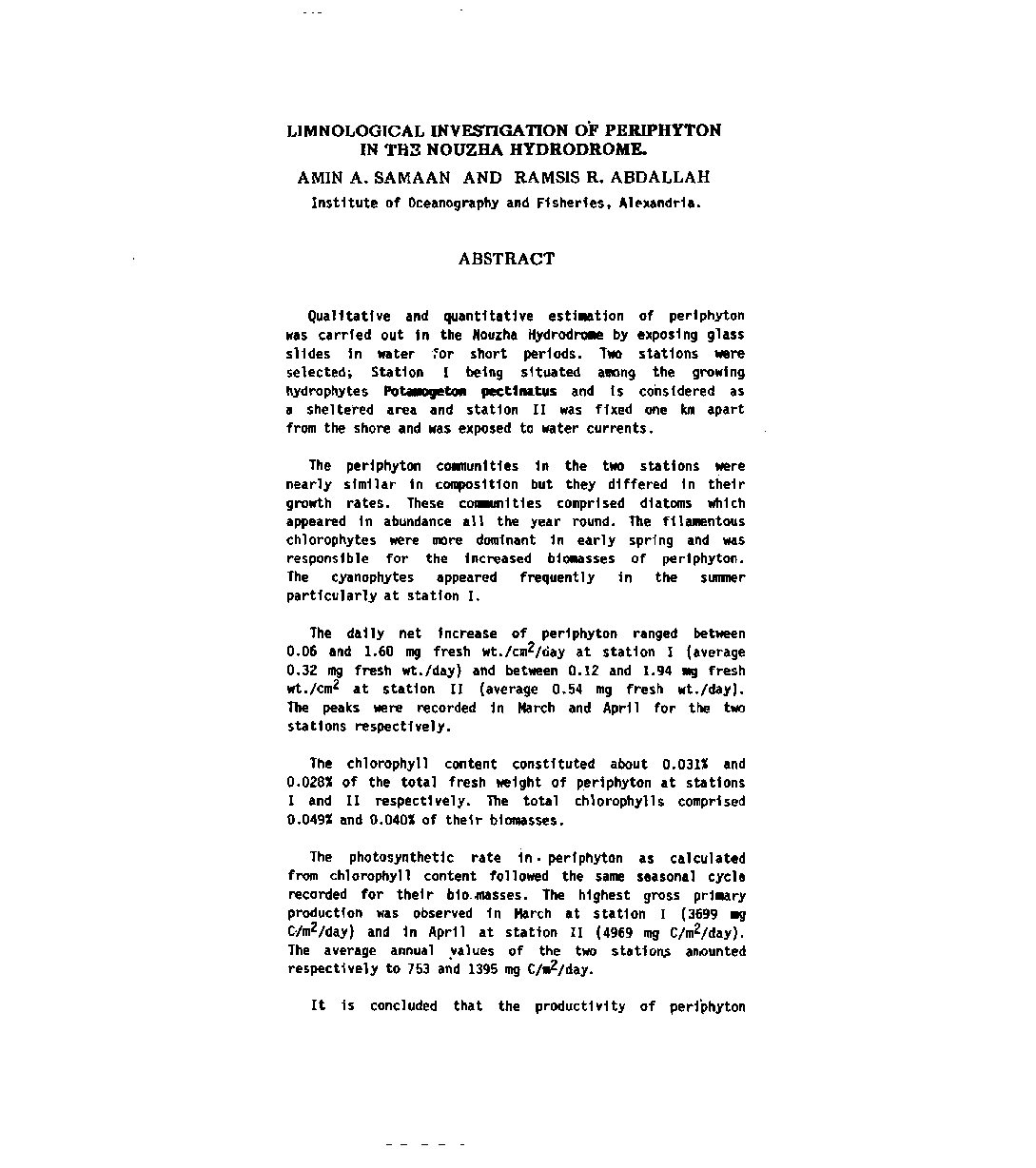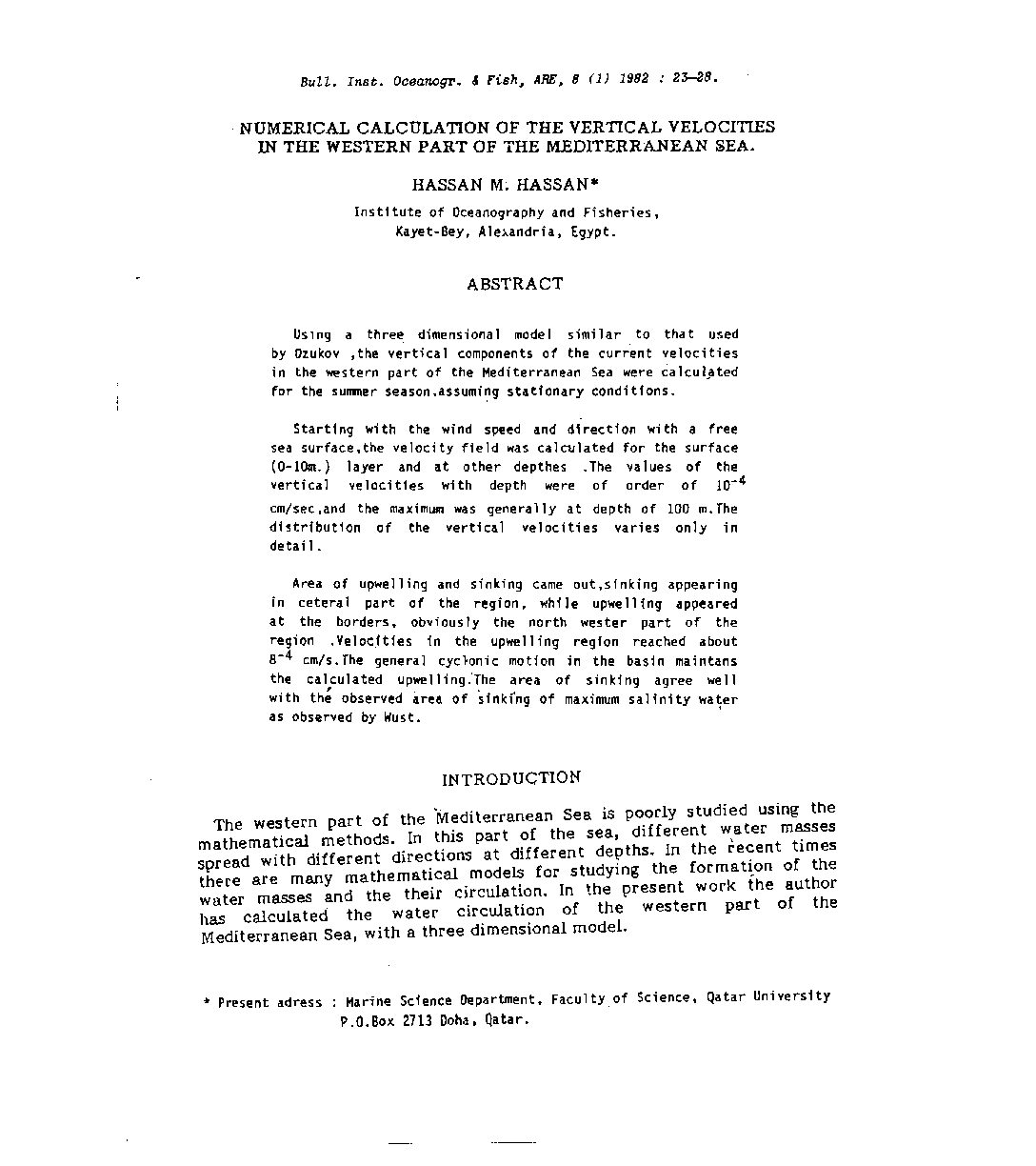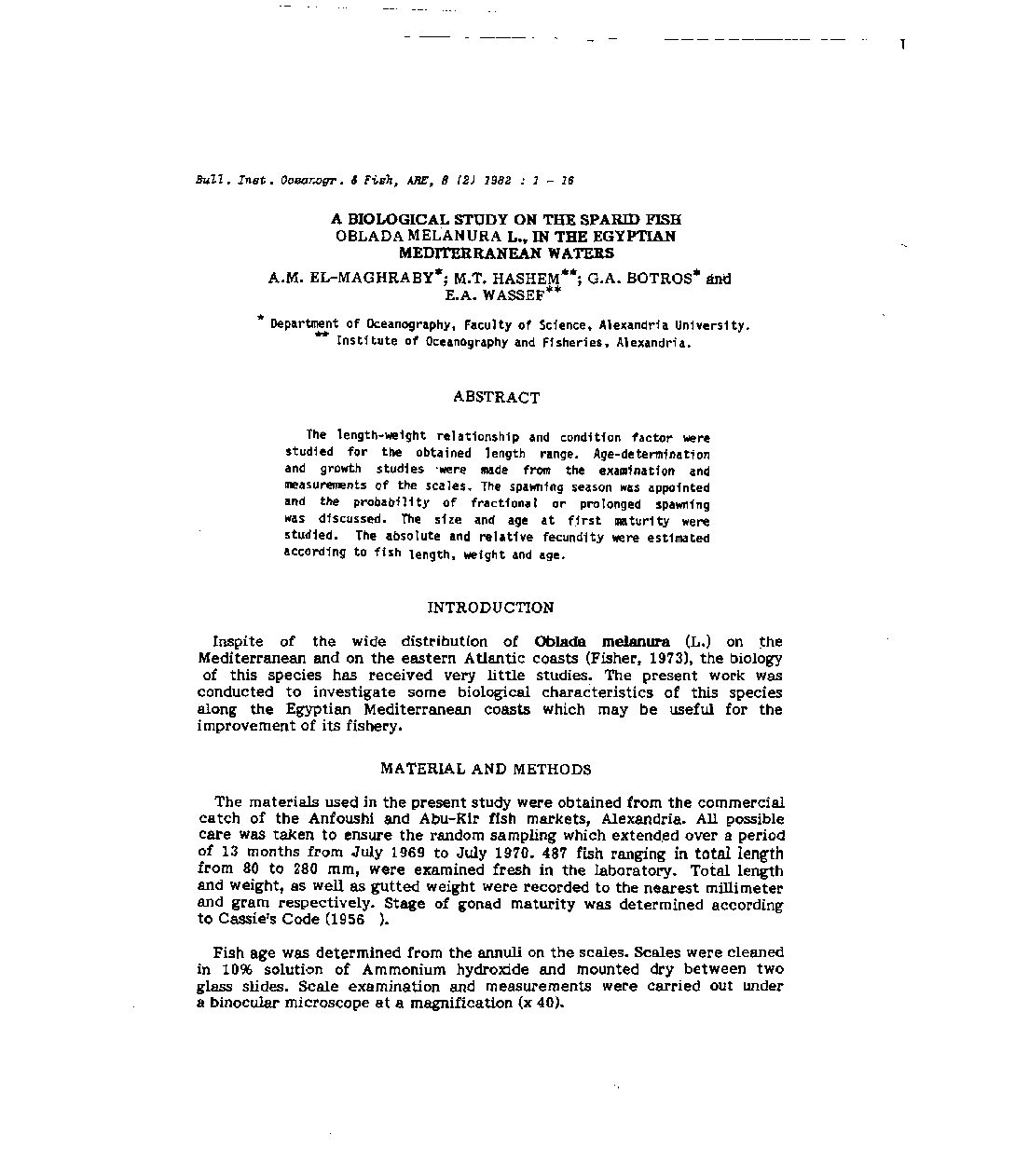Categories
Vol-8LIMNOLOGICAL INVESTIGATION OF PERIPHYTON
IN THS NOUZHA HYDRODROME.
AMIN A. SAMAAN AND RAMSIS R. ABDALLAH
Institute of Oceanography and Fisheries. Alexandria.
ABSTRACT
Qualitative and quantitative estimation of periphyton
was carried out in the Nouzha Hydrodrome by exposing glass
slides in water lor short periods. Two stations were
selected. Station I being situated among the growing
hydrophytes Pot.Mogeton pect1natus and is considered as
a sheltered area and station II was fixed one km apart
from the shore and was exposed to water currents.
The periphyton communities in the two stations were
nearly similar in composition but they differed in their
growth rates. These communities comprised diatoms which
appeared in abundance all the year round. The fl1alllentous
chlorophytes were more dominant in early spring and was
responsible for the increased biomasses of periphyton.
The cyanophytes appeared frequently in the summer
particularly at station I.
The daily net increase of periphyton ranged between
0.06 and 1.60 mg fresh wt./cm2/oay at station I (average
0.32 mg fresh wt./day) and between 0.12 and 1.94 mg fresh
wt./cm2 at station II (average 0.54 mg fresh wt./day).
The peaks were recorded in March and April for the two
stations respectively.
The chlorophyll content constituted about 0.0311 and
0.0281 of the total fresh weight of periphyton at stations
I and II respectively. The total chlorophYlls comprised
0.0491 and 0.0401 of their biomasses.
The photosynthetic rate in. periphyton as calculated
from chlorophyll content followed the same seasonal cycle
recorded for their bio..masses. The highest gross primary
production was observed in March at station I (3699 mg
Clm2/day) and in April at station II (4969 mg C/m2/day).
The average annual values of the two statioR$ an~unted
respectively to 753 a~d 1395 mg C/m2/day.







